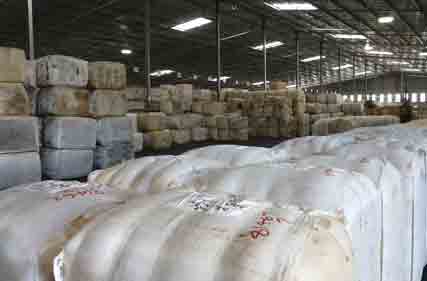 The wool market opened with news of the South African wool sales being cancelled as news circulated of the outbreak of Foot and Mouth disease and the subsequent ban of SA wool exports in to the largest market, China.
The wool market opened with news of the South African wool sales being cancelled as news circulated of the outbreak of Foot and Mouth disease and the subsequent ban of SA wool exports in to the largest market, China.
This had an immediate positive effect on the opening day of the Australian Wool auctions with Tuesday’s market adding 4c to the EMI, whilst the northern and western indices adding 10 and 15c respectively, whilst the Melbourne Market indicator held firm.
Unfortunately exporters received little or no follow on business for Wednesday’s sale, and when added to the accruing logistics and monetary factors in the market, the regional indices retraced almost all of the gains of Tuesday in all centres.
From the 42,737 bales offered, 86.1% was cleared to the trade with the large Chinese top makers and Australian based exporters dominant in the sale rooms. The currency exchange rates had a significant impact on wool prices this week and especially on the final day of selling.
The AUD strengthened significantly whilst the Euro moved almost 4% lower from the end of last week. This forced the cost of wool for those buying in Euro 3.3% higher.
Merino Fleece in the northern markets opened 20-30c dearer based on the new Chinese interest. European buyers were noticeably quieter this week which may have been the less suitable selection of best style and specified lots on offer. Subsequently this week, the premiums for Certified Non Mulesed lots were not as prominent as the previous 3 months of frenetic competition. Wednesday’s offering saw a loss of most of the previous days rises in most MPG’s finishing just below last week’s levels and others just above. My sources inform me that Melbourne’s final day saw rather large price discounts appear.
Merino Skirtings with less than 3% VM were in sellers favour on Tuesday with the heavier VM types just holding firm. Wednesday saw the <3% VM fall 10-15c whilst the medium and heavier lots taking a heavy hit. A large part of the current offering is reflecting the wet summer conditions, displaying heavy colour and cotted wool.
n some extreme cases, there are escalating lines of water stain, dermo and even lines of fly stain lots being presented with only a few bidders interested. Over 46% of the eastern state skirt offering had some colour or cotted wool whilst this expanded to 76% of the Northern Region skirting offering with heavy colour or cotted wool.
Crossbreds continued to be hard to sell with only the best style, specified and classed lots maintaining last week’s levels. The rest of the offering was extremely erratic and at times 20-50c cheaper than last weeks levels.
Cardings had a less volatile week than their combing counterparts, closing within 4.5c on average across Australia of last week’s levels.
The rain around the district was almost perfectly timed for the cropping and pasture calendar, and will add huge potential to the season ahead of us. Agriculture has certainly been experiencing one of its best periods in my time in business in respect to commodity prices and seasonal conditions, favouring sheep and wool.
Conversely the world is experiencing some extreme challenges; Covid 19 still continues to impact the health of the world population, which in turn has forced an evolution in restrictions in how we move around and perform some of the basic functions of life. Then there is the conflict in the Ukraine and Russia which is having huge impact on the access to some essential commodities.
The biggest hurdle for the wool industry (and others) being the degradation of the shipping services as well as the containerisation facilities, which has significantly extended the time an exporters money in circulation.
This has become the largest hurdle for exporters who may get to the point that they cannot buy until their funds are received as Letters of Credit are opened. I feel that this will override the current positive demand for Merino wool when exporters cannot finance the purchases to their full capacity.
It is times like this where looking at a hedge for your upcoming shearing would be extremely prudent. This week is the final sale before the one-week Easter recess. Due to the Good Friday Public Holiday, all centres are restricted to two selling days (Tuesday/Wednesday). 48,413 bales are currently expected to be offered.
~ Marty Moses, Moses and Son
